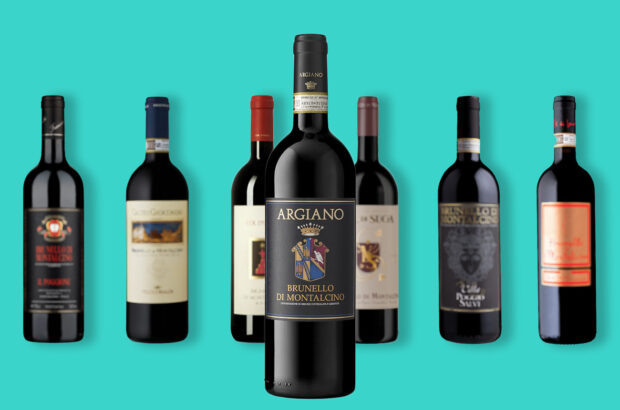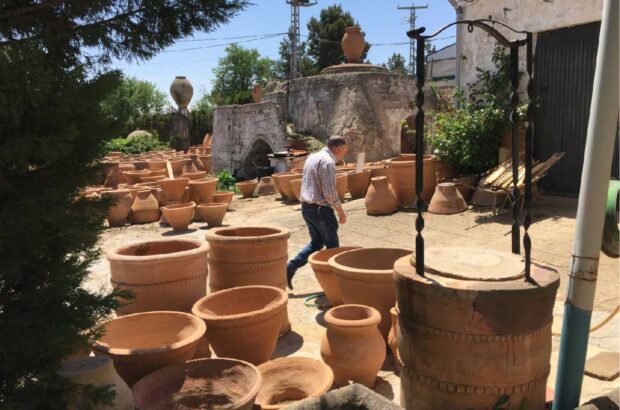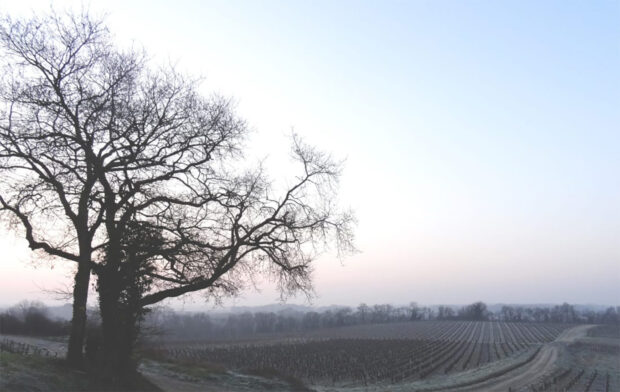- From generally oxidised rosés to full-bodied reds, the transition in Navarra’s winemaking has been sudden and overwhelming.
- Priorato has come about thanks to the dedication of a few young winemakers determined to get the best out of these uniquely concentrated dense wines from their hard slate soils.
- In Ribera del Duero there is a great debate about grape varieties.
- Rioja’s wines are not amongst the most powerful wines in Spain, excepting the rise of quality wineries in Rioja Baja.
- There’s something about the structure and tannins of the wines of Somontano that allows them to sit easily among the Spanish heavyweights.
- Toro makes fun, hugely drinkable wine at great prices.
Spain is the land of the big gesture. The summers boil and the winters freeze. The Spaniards relish the suffering and the pleasure their land brings in equal measure.
As with the land, so it is with wine. If any country can lay claim to making the European equivalent of the bold wines of the New World, it is Spain. Here the fruit can be more vivid, the colour darker and deeper, the alcohol higher than anywhere else on this continent. From the venerable gran reservas of Rioja to the lusty reds of Toro, from the extraordinary strength and exotic flavours of Priorato to the concentrated elegance of Ribera del Duero: here are power, ripe fruit, depth of flavour and dense tannins in equal and abundant measure.
Navarra
From generally oxidised rosés to full-bodied reds, the transition in Navarra’s winemaking has been sudden and overwhelming. Garnacha, the workhorse rosé grape now is less than 40% of plantings, compared with 90% in the 1980s. Its place has been taken by the Spanish Tempranillo, and, equally excitingly, by Cabernet Sauvignon and Merlot. Now, after a frenzied seesaw, Garnacha is finding favour in red wines with producers who are prepared to crop low, and to use the fruit of old vines.
Navarra’s winemaking regions fall into five zones: Tierra de Estella, Valdizarbe, Baja Montaña, Ribera Alta and Ribera Baja. From high, 600-metre vineyards of Valdizarbe to the 250-metre vineyards of Ribera Baja, there is a huge stylistic variance in red wines. If you want oomph, go to Ribera Baja. Here the Palacio de la Vega winery makes powerful reds using Garnacha, alongside the more recent plantings of Tempranillo, Cabernet and Merlot.
Navarra’s big three wineries also are making the most of the new plantings. Chivite, with Colección 125 Reservas, blends small proportions of Merlot and Cabernet into mainly Tempranillo wines. Gulbenzu replanted its vineyards in the 1980s with the new varieties and makes a strong statement with Reserva Evo, which has 70% of Cabernet. Ochoa makes distinctive varietal wines – a Cabernet, a Merlot and a Tempranillo – all with 12 months in wood.
Priorato
Twenty years ago, Priorato, as a wine area, had all but disappeared. Spiralling costs of maintaining the vertiginous terracing coupled with a depopulation of the countryside, meant this Catalan vineyard was dying. Its revival – and its current cult status – has come about thanks to the dedication of a few young winemakers determined to get the best out of these uniquely concentrated dense wines from their hard slate soils. Garnacha and Cariñena, hardly a combination to bring lights to the eyes of New World winemakers, here work together with the soil and the searing heat to create a palate of tastes and flavours (and alcohol at around 14%) which in itself justifies the whole concept of terroir. Combined with Cabernet Sauvignon, Merlot and Syrah (perfect in this climate so reminiscent of the Rhône), the new generation of boutique wines is as expensive as any in Spain. They appear to have unlimited ageing ability: 20 years before maturity is quite on the cards.
Two older cellars still operate and have moved gently with the times: Cellers de Scala Dei and Masía Barril. The newer wineries are Costers del Siurana, Alvaro Palacios and René Barbier. Flagship wines include Costers del Siurana’s Clos de l’Obac, Alvaro Palacios’s L’Ermita and Barbier’s Mogador. Torres, from nearby Penedès, has now planted vines here, and plans to make more powerful reds.
Ribera del Duero
At one extreme Ribera del Duero is the home of Spain’s most prestigious winery, Vega Sicilia. At the other, some of the cooperatives continue to make wines that could come out of another, older, age. The stars that have appeared in the past 10 to 15 years are still lights against a curious darkness. At the same time, there is a great debate about grape varieties. The basic grape of the region is the Tempranillo, under its local names, Tinto Fino or Tinto del País. There are some wineries which believe that the secret to success lies in making 100% Tinto Fino wines, using 100% new wood. One of these is Pesquera, whose wines, especially the Janus Gran Reserva, are as sumptuous and opulent as any in the region.
By contrast Vega Sicilia, and its recent acquisition, the Bodegas y Viñedos Alíon, believe in blending. Since Vega Sicilia was the first to introduce Cabernet Sauvignon to the region, this is hardly surprising. The hugely ageworthy Unico, as well as the concentrated Alíon, are the results. But in the power stakes, the Tinto Fino wines must have the edge. I’m thinking of wines such as Pesquera, the new star Dominio de Pingus from the cellar of Dane Peter Sisseck and the Viña Pedrosa Gran Reserva of Perez Pascuas. These wines show that, alongside the elegance of the Tinto Fino-Cabernet blends, Ribera del Duero can also make wines that equal in power any in Spain.
Rioja
Rioja’s wines are not amongst the most powerful wines in Spain – elegance, concentration, yes, but not power. But, as in every wine region there are exceptions. One exception, of increasing importance, is the rise of quality wineries in Rioja Baja. Traditionally, the Baja (the dry, eastern end of the Rioja region) made heavy wines from Garnacha that went to beef up blends made by the wineries in the more quality western sections of Rioja Alavesa and Rioja Alta. Today, the Baja’s wines, with their higher potential alcohol, are beginning to stand on their own. Bodegas Palacios Remondo is the only bodega in Rioja to have planted Merlot. But it also produces wines with a high proportion of Graciano in the blend – as in the top Dos Viñedos – to give acidity and extract to the heavier Tempranillo and Garnacha of Baja. The Barón de Ley bodega uses Cabernet Sauvignon and gives its modern wines flesh and fruit.
As a contrast to this modernity, there are the gran reservas, the glory of more traditional Rioja. These expressions of old wood and super-ripe Tempranillo are only made in the finest years – 1982 was the most recent really top year, before the magnificent pair of 1994 and 1995. But if you want power in a velvet glove, the Gran Reservas of bodegas such as La Rioja Alta (Viña Ardanza), CVNE (Imperial) and Muga (Prado Enea) best express this tradition.
Somontano
Somontano’s wines are certainly not the most powerful of Spain – a mere 12.5% alcohol is more akin to Bordeaux. But there’s something about their structure and tannins – and above all about their ripe fruit – that allows them to sit easily among the Spanish heavyweights. It’s a new region, as far as quality is concerned. The catalyst has been the arrival of Pinot Noir, Cabernet Sauvignon and Merlot from France, just across the Pyrenees, only 80 miles to the north. They bring a touch of Gallic class to the Tempranillo and the local Moristel, and sometimes turn up on their own as mono-varietal wines. Yet, these are not Bordeaux or burgundy look-alikes. The fruit is too ripe, for a start. For though Somontano has cool nights, it has the proper Spanish heat in the summer for really mature grapes.
The two most exciting bodegas of the region make wines blending French and Spanish grapes. Viñas del Vero has single varietal Merlot and Cabernet Sauvignon, which age for six months in French oak. In addition, its top cuvée is Gran Vos (to which, despite its name, I cannot lay claim), a wonderful blend of Cabernet, Merlot and Pinot Noir, all dense, concentrated smoky flavours. Bodegas Pirineos makes special bottlings for Britain of Tempranillo and Tempranillo-Cabernet under the brand name of Espiral, as well as pricier wines like Señorío de Lazán, a blend of Moristel, Tempranillo and Cabernet Sauvignon.
Toro
Toro makes fun, hugely drinkable wine at great prices. This is Tempranillo again (here called Tinto de Toro) at its most vibrant and certainly its most alcoholic – with 15% not unknown. Until recently, the DO region, to the west of Ribera del Duero, was better known for the wheat it produces, than for its wines. Two wineries now dominate the production of the new reds, designed to be drinkable relatively young. Bodegas Farina makes probably the most famous wine of Toro: Gran Collegiata. Eight months barrel ageing in American and French oak merely enhances the plums and the spices of the fruit, and wraps around the 13.5% alcohol of the wine. Collegiata, the younger sibling, sees no wood, while Gran Collegiata Reserva has 18 months in barrel, and seems to lose some of its attractive fruit quality as a result.
The other benchmark winery of Toro is Frutos Villar, which also has wineries in Ribera del Duero and Cigales. Their Toro brand is Muruve – a Joven (young wine), a Crianza and a Reserva (Gran Muruve). Again, it’s the fruit: the power, the ripeness – it’s something more familiar to Australian winemakers than to Europeans. But that, too, is changing.











